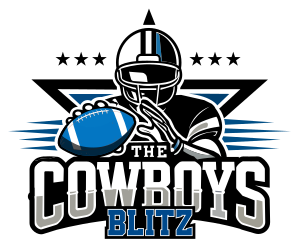Bob Sacamano
Benched
- Messages
- 57,084
- Reaction score
- 3
http://rds.yahoo.com/_ylt=A0geu75JPBRGQ0cBuF9XNyoA;_ylu=X3oDMTE3OGlmb2VlBGNvbG8DZQRsA1dTMQRwb3MDMgRzZWMDc3IEdnRpZANERlI1XzE0Mg--/SIG=12dmh5mkg/EXP=1175817673/**http%3a//forum.signonsandiego.com/printthread.php%3ft=43317
Then I looked for athletes with average-to-below average 40-yard times for their position who make up for the lack of long straight speed with exceptional quickness and change of direction. As we all know, unless you're on the kickoff team or running a "go" route at the wide receiver position, it's almost impossible to find a spot in a football game where you can identify a 40-yard dash. A lack of great straight speed can easily be offset by the ability to explode out of a stance, change direction in five yards, explode again for 10 yards and then change direction again, all while keeping your weight down. The short shuttle can be a much better indication of your ability to play football fast. I didn't say an indication of the ability to play football, but rather of the ability to play football fast.
I handled the speed training for the players when I was with the Jets for three years back in the early 90s. My general rule of thumb for comparing speed (the 40-yard dash time) to quickness and change of direction (the 20-yard short-shuttle test) was to take the 40 time and subtract the short-shuttle time and expect a 0.5 difference. For example, a player with a 5.0 40 time needs to run a 4.5 short shuttle to get the 0.5 differential. Simply stated, his speed and his quickness relate to each other. A man who runs a 4.4 40 and a 4.4 short shuttle is really a guy with straight-line speed who may not play very fast because of a lack of quickness. He is often referred to as a guy with "track speed." Conversely, an athlete who runs an average time of 4.7 in the 40 but can hit the short shuttle in 3.9 -- significantly better than the 0.5 differential -- can overcome his average speed with great quickness and change of direction.
again, this formula is measuring quickness
Then I looked for athletes with average-to-below average 40-yard times for their position who make up for the lack of long straight speed with exceptional quickness and change of direction. As we all know, unless you're on the kickoff team or running a "go" route at the wide receiver position, it's almost impossible to find a spot in a football game where you can identify a 40-yard dash. A lack of great straight speed can easily be offset by the ability to explode out of a stance, change direction in five yards, explode again for 10 yards and then change direction again, all while keeping your weight down. The short shuttle can be a much better indication of your ability to play football fast. I didn't say an indication of the ability to play football, but rather of the ability to play football fast.
I handled the speed training for the players when I was with the Jets for three years back in the early 90s. My general rule of thumb for comparing speed (the 40-yard dash time) to quickness and change of direction (the 20-yard short-shuttle test) was to take the 40 time and subtract the short-shuttle time and expect a 0.5 difference. For example, a player with a 5.0 40 time needs to run a 4.5 short shuttle to get the 0.5 differential. Simply stated, his speed and his quickness relate to each other. A man who runs a 4.4 40 and a 4.4 short shuttle is really a guy with straight-line speed who may not play very fast because of a lack of quickness. He is often referred to as a guy with "track speed." Conversely, an athlete who runs an average time of 4.7 in the 40 but can hit the short shuttle in 3.9 -- significantly better than the 0.5 differential -- can overcome his average speed with great quickness and change of direction.
again, this formula is measuring quickness



